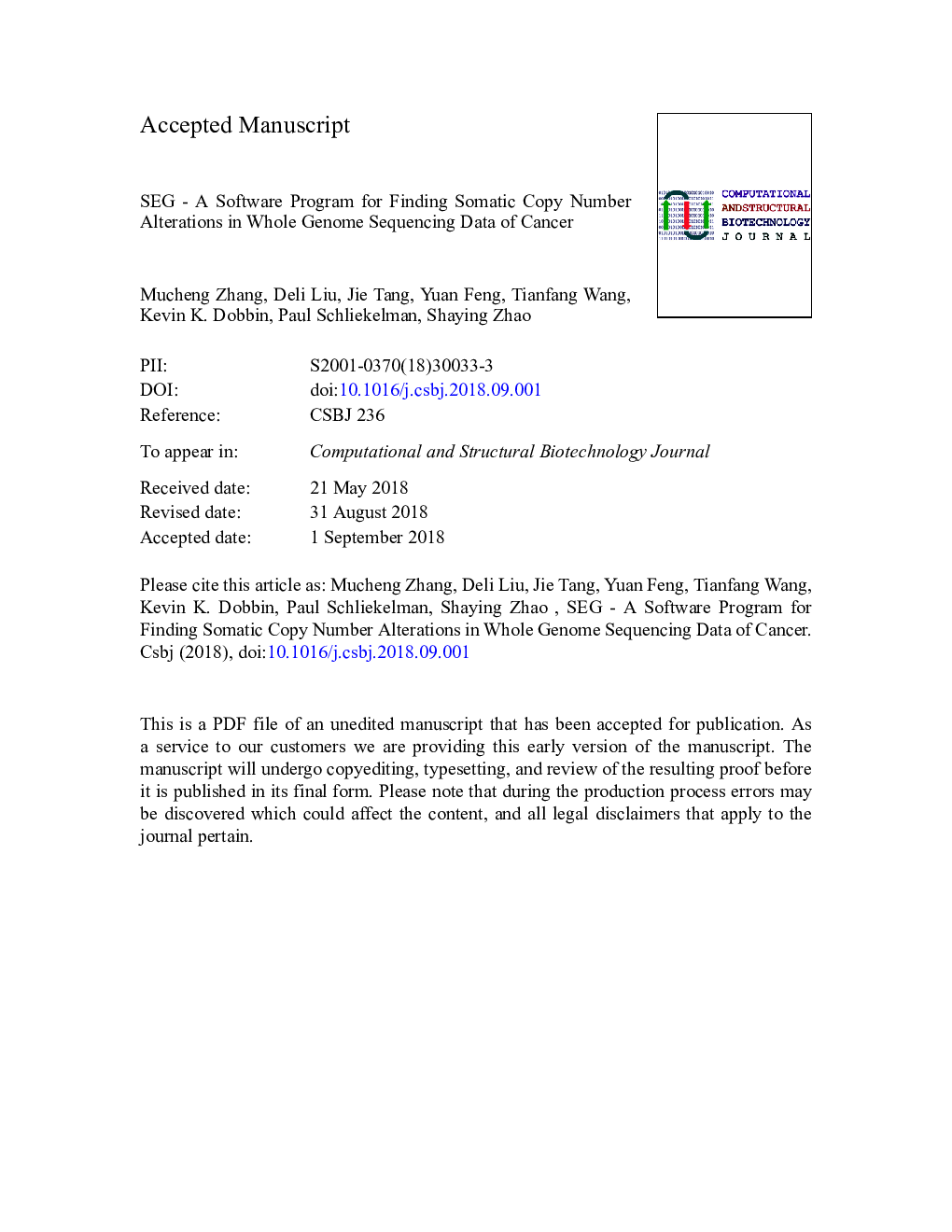| Article ID | Journal | Published Year | Pages | File Type |
|---|---|---|---|---|
| 11007670 | Computational and Structural Biotechnology Journal | 2018 | 23 Pages |
Abstract
As next-generation sequencing technology advances and the cost decreases, whole genome sequencing (WGS) has become the preferred platform for the identification of somatic copy number alteration (CNA) events in cancer genomes. To more effectively decipher these massive sequencing data, we developed a software program named SEG, shortened from the word “segment”. SEG utilizes mapped read or fragment density for CNA discovery. To reduce CNA artifacts arisen from sequencing and mapping biases, SEG first normalizes the data by taking the log2-ratio of each tumor density against its matching normal density. SEG then uses dynamic programming to find change-points among a contiguous log2-ratio data series along a chromosome, dividing the chromosome into different segments. SEG finally identifies those segments having CNA. Our analyses with both simulated and real sequencing data indicate that SEG finds more small CNAs than other published software tools.
Related Topics
Life Sciences
Biochemistry, Genetics and Molecular Biology
Biotechnology
Authors
Mucheng Zhang, Deli Liu, Jie Tang, Yuan Feng, Tianfang Wang, Kevin K. Dobbin, Paul Schliekelman, Shaying Zhao,
